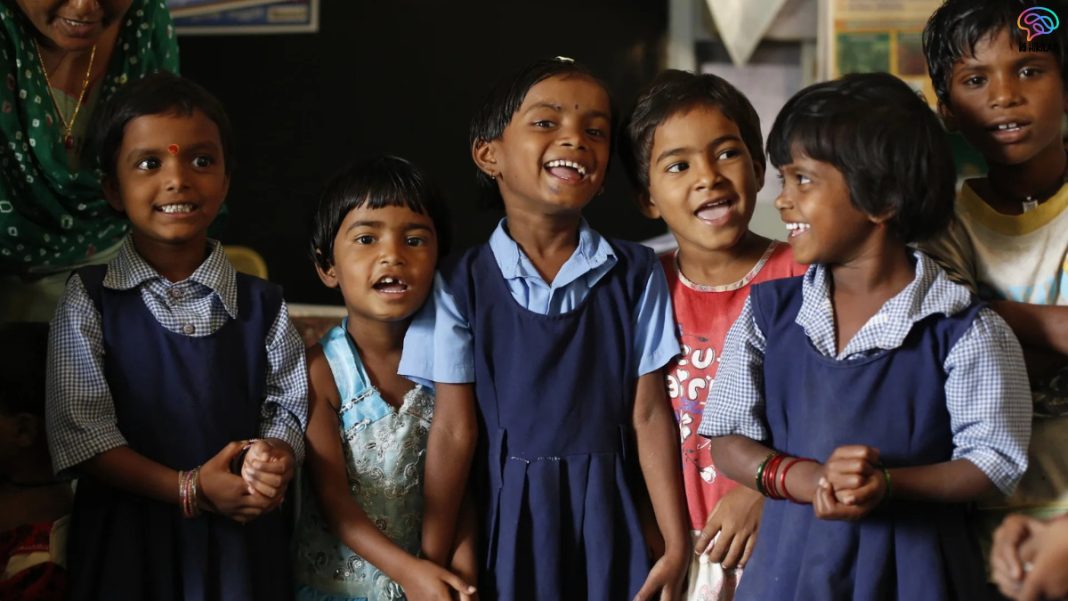Stunting in India remains one of the gravest public health issues, despite decades of policies and programmes aimed at improving child nutrition. The government’s flagship scheme, POSHAN Abhiyaan, launched in 2018, targeted a reduction of stunting by 2% points annually. However, the progress has been minimal. Data from 2025 reveals that 37% of children under five are stunted, only a marginal decline from the 38.4% recorded in 2016. This slow improvement reflects deep-rooted structural and socio-economic issues affecting child nutrition and growth.
Understanding Stunting and Its Impact
Stunting is defined as children being too short for their age due to chronic malnutrition. It indicates long-term deprivation that directly hampers both physical growth and cognitive development. Stunted children often struggle with poor educational outcomes, reduced productivity, and limited economic opportunities as adults.
In India, nearly half of stunted children are born small for their gestational age, which highlights the importance of prenatal health. The issue is not just a childhood concern but has lifelong implications, creating a cycle of poverty, poor health, and limited opportunities for millions of families.
Maternal Health and Early Childhood Care
Maternal health plays a critical role in breaking the cycle of stunting. Teenage pregnancies, coupled with high rates of anaemia among pregnant women, significantly increase risks of low birth weight and stunting in children. Despite laws against child marriage, adolescent pregnancies continue, with nearly 7% of women aged 15–19 already childbearing in 2025.

Education also emerges as a powerful determinant. Studies show that children of uneducated mothers are nearly twice as likely to be stunted compared to those of educated mothers. Thus, maternal literacy and access to healthcare are crucial in addressing intergenerational malnutrition.
Nutrition and Breastfeeding Practices
Dietary patterns remain a major contributor to stunting in India. A large proportion of children consume diets dominated by carbohydrates, with very low protein intake. Only 11% of children under two years receive a minimum acceptable diet that combines dietary diversity with appropriate feeding frequency.
Breastfeeding practices are also concerning. Exclusive breastfeeding for the first six months is vital, but only 64% of infants are exclusively breastfed in India. The rise of caesarean deliveries, now exceeding 22%, disrupts the initiation of early breastfeeding, further affecting infant nutrition. Additionally, working mothers face challenges due to limited maternity leave and inadequate workplace support, restricting optimal feeding practices.
Sanitation and Environmental Factors
Nutrition is not the sole factor behind stunting. Sanitation and hygiene play a pivotal role. Even today, around 19% of Indian households practice open defecation, contaminating drinking water sources and causing repeated infections among children.
Chronic diarrhoea and intestinal infections significantly reduce nutrient absorption, creating a vicious cycle where malnutrition weakens immunity and illness worsens nutrient loss. Access to clean water, sanitation, and hygiene (WASH) facilities is therefore fundamental to tackling stunting.
Systemic Barriers and Socioeconomic Dimensions
Stunting reflects the broader social inequalities in India. Poverty, poor education, and inadequate healthcare access continue to create barriers for millions of families. Protein-rich and micronutrient-dense foods remain unaffordable for large sections of society, particularly among tribal communities and rural poor households.
Government schemes, such as providing eggs and fortified foods in Anganwadi centres, have introduced some improvements. However, gaps in coverage, quality, and implementation remain significant. Even where programmes exist, they often fail to reach the most vulnerable populations consistently.
The Way Forward
To address stunting in India, a multi-pronged strategy is necessary:
- Maternal health and education must be prioritised through awareness campaigns and incentives.
- Improved dietary diversity, with protein and micronutrient supplementation, should be made affordable and accessible.
- Exclusive breastfeeding should be supported through maternity leave, lactation counselling, and workplace reforms.
- WASH infrastructure must be strengthened to prevent infections.
- Community-based interventions tailored to local needs can ensure better outreach and participation.
Conclusion

The persistence of stunting in India highlights systemic failures that go beyond nutrition and touch upon education, sanitation, gender inequality, and poverty. While initiatives like POSHAN Abhiyaan mark important steps, they are not enough without stronger implementation and accountability.
If India is to achieve its vision of becoming a developed nation by 2047, addressing stunting must be a national priority. A healthy childhood is the foundation of a productive future, and reducing stunting is not just about growth—it is about securing India’s long-term human capital and economic strength.




